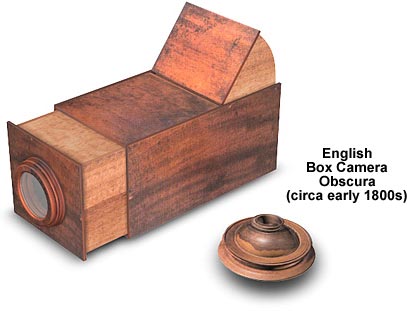English Box Camera Obscura
The camera obscura has been described as early as the thirteenth century as a means to project an image into a dark room or onto a screen. This wooden example of the camera obscura was made in England during the first part of the nineteenth century. An original version of the microscope was photographed and described by Gerard Turner in his excellent volume Collecting Microscopes.

Originally, the camera obscura consisted on a darkened or blackened room with a small hole strategically placed in a wall or window shutter through which light passed, producing an inverted image of the scenery outside the room. In later versions, a lens was introduced (positioned in the hole) to provide a brighter, more crisp image. When the lens shape is convex, and used with a concave mirror, or when two convex lenses are used, the resulting image is enlarged and erect. This dual-lens design was heavily employed in seventeenth and eighteenth century camera obscura arrangements and also in scioptic balls (lower right in the figure). The camera obscura illustrated above has a flap at the rear of the camera, which can be lifted to reveal a ground-glass screen that displays the image projected by the lens.
BACK TO NINETEENTH CENTURY MICROSCOPES
